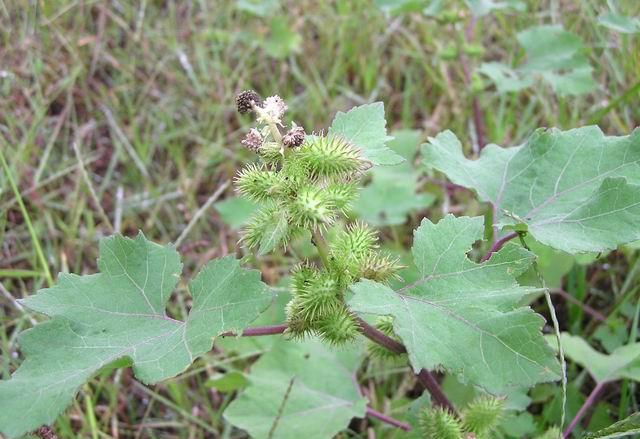
Cang-ear, also known as cangzi, cattle lice, pig's ear, vegetable ear, old cangzi, etc., is a family of Asteraceae, cang-ear is an annual herb of the genus Cang-er, 20-90 cm tall, spindle-shaped root.
The stem of the ear is erect, unbranched or sparsely branched, cylindrical in the lower part, 4–10 mm in diameter, with a longitudinal groove on the upper part, covered with grayish-white rough hairs.
The leaf is triangular ovate or heart-shaped, 4–9 cm long, 5–10 cm wide, near the full margin, or with 3–5 inconspicuous shallow lobes, apex pointed or blunt, slightly heart-shaped or truncated at the base, equal to the petiole junction, with irregular coarse serrations at the edges, with three basal veins, lateral veins curved, straight to the leaf margin, densely covered with coarse hairs on the veins, green above, pale below, coarsely haired; petiole length 3–11 cm.
Cephalic inflorescences of males with orbigas flies, 4–6 mm in diameter, with or without inflorescence peduncles, total bracts oblong-round lanceolate, 1–1.5 mm long, covered by short soft hairs, the flower tray columnar, the peduncle inverted lanceolate, about 2 mm long, apex pointed, with micro-hairs, with most male flowers, corolla bell-shaped, 5 wide lobes at the upper end of the tube; anthers oblong linear; female head inflorescence oval, small outer total bracts, lanceolate, about 3 mm long, by short soft hairs, the total bracts of the inner layer combined into a sac, broad ovoid or oval, green, pale yellowish green or sometimes with a reddish brown.
The ear becomes hard when the fruit is ripe, along with the beak 12-15 mm long and 4-7 mm wide, with sparse hook-like spines on the outside, the spines are extremely thin and straight, the base is slightly thickened or almost unwound, 1-1.5 mm long, the base is softly hairy, often glandular spots, or all hairless; the beak is hard, tapered, slightly sickle-shaped at the upper end, 2.5 mm long, often unequal in length, rarely combined to form a beak. Lean fruit 2, inverted ovate.
The seeds of the ear are not very demanding, just wash the seeds and then air dry to sow. If storage is required for a period of time, the seeds can be placed in wet sand for storage, but the germination rate of the seeds will gradually decrease. The storage time should not be too long, not only is it not conducive to germination, but the emergence of seedlings will be uneven. Cang'er generally sows seedlings around the Mid-Autumn Festival every year, and makes a nursery bed before sowing, and digs a nursery ditch. The seeds are then placed in the nursery ditch, fertilized, covered with mulch, and uncovered when the emergence rate reaches about 80%. About 15 days after emergence, timely fertilizer and watering, do a good job of field management, and transplant and colonize when the seedlings grow to about 65 cm.
After the emergence of the seeds, it is not only necessary to transplant according to the growth of the seedlings, but also to observe the weather, and usually the best time to transplant is in early spring. Before transplanting, water enough water, cut the stumps short after digging out the seedlings, transplant the soil, transplant the planting should not be too deep, and then water the soil after transplanting. Control the colonization density and dig the colonization hole, because the ear is a hermaphroditic plant, and the valuable part is the fruit, so it is necessary to ensure that there is a sufficient number of pollinator trees and the number of fruits. Prevent uneven pollination, affect the result rate, and lead to a decrease in yield.
After transplanting, do a good job of fertilizer water management, according to the water content of the soil in time, but the water should not be too much, because the root of the ear is shallow, easy to produce waterlogging. Fertilizer can use farm manure, remember to fully decompose, otherwise it will burn out the roots, nutrient absorption and transportation is hindered, affecting growth. And it is necessary to cultivate and weed in time to prevent soil compaction and weeds from growing, which poses a threat to the growth of cang'er.
Cang'er is medicated with whole grasses, roots, flowers, and fruits with total buds.
The total bracts of this plant have hook-like hard spines, which are often attached to livestock and humans, so they are easy to spread. It is a common field weed. Seeds can be pressed oil, and the properties of tung oil are similar, and can be mixed with tung oil to make paint, and can also be used as raw materials for ink, soap and linoleum.
It is distributed in the northeast, north China, east China, central China, south China, northwest and southwest provinces and regions. It grows in plains, hills, low mountains, wilderness roadsides, and fields.
See more novel flora and fauna, pay attention to Qiwen navigation, I would like to navigate for you!